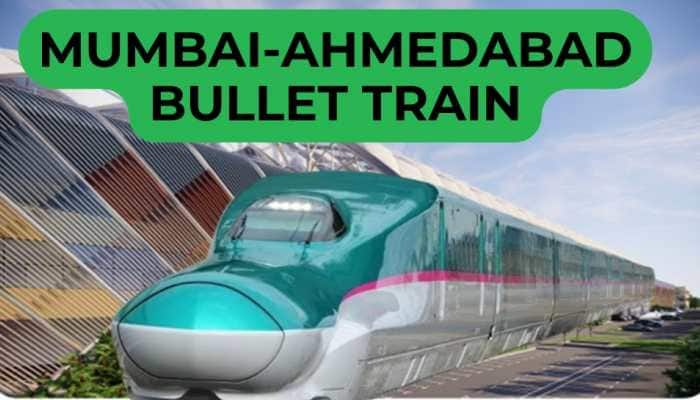Mumbai-Ahmedabad Bullet Train Delayed: When To Expect A Ride With Construction At 47%? Vande Bharat To Bridge The Gap
India’s first bullet train project, the Mumbai-Ahmedabad High-Speed Rail Corridor (MAHSR), is a groundbreaking initiative aimed at revolutionizing the country's rail infrastructure. Using Japanese Shinkansen technology, this high-speed rail will operate at around 320-350 km/h, significantly reducing travel time between Mumbai and Ahmedabad. Spanning 508 km, the corridor is set to redefine rail travel in India, enhancing speed, efficiency, and passenger experience.
11.8% Of EIRR
)
MAHSR project passes through high growth rate States of Gujarat and Maharashtra connecting business centres of Mumbai, Surat, Vadodara and Ahmedabad. The project Economic Internal Rate of Return (EIRR) as per feasibility study conducted by Japanese International Cooperation Agency (JICA) was estimated to be 11.8%.
Key Features and Route Details

The Mumbai-Ahmedabad Bullet Train Corridor will have 12 stations, with 8 in Gujarat, 4 in Maharashtra, and a 4 km stretch through Dadra & Nagar Haveli. The route comprises 465 km of viaducts, 10 km of bridges, 7 km of embankments, 21 km of underground tunnels (including a 7 km undersea section) and 5 km of mountain tunnels. The High-Speed Rail Multi-Modal Hub at Sabarmati will further enhance connectivity, making it a major transit point in Gujarat.
Current Progress, Stations

As per the Economic Survey 2024-25, about 47% of physical progress has been achieved on the project. Construction is advancing steadily, with over 255 km of viaducts already completed, and rail laying initiated near Vadodara. Several key stations—including Anand, Bharuch, Surat, Vapi, and Bilimora—are in advanced development stages, integrating unique regional themes into their designs.
Delays and Revised Timeline

Initially expected to be completed by 2026, the Mumbai-Ahmedabad Bullet Train Project is now projected to debut in 2030, with full-scale operations by 2033, said a report by the Indiatimes.com. The delays have been attributed to multiple factors, including land acquisition challenges, policy approvals, and pandemic-related disruptions.
7,000-KM Of High-Speed Train Network

In the Union Budget 2025-26, the Ministry of Railways announced a long-term vision to operationalize 7,000 km of high-speed rail by 2047. The National High-Speed Rail Corporation Limited (NHSRCL) is spearheading this transformation, with the MAHSR serving as the model for future corridors.
Mumbai-Ahmedabad Vande Bharat Trains

As India prepares for the bullet train era, the Vande Bharat Express has emerged as a high-speed alternative for the Mumbai-Ahmedabad route. Capable of reaching 280 km/h, these trains will bridge the gap until Shinkansen operations commence. The first Vande Bharat trains on the Mumbai-Ahmedabad route are expected by 2027, said media reports.
Advanced Signaling Systems

The bullet train will use Japanese DS-ATC signaling, while Vande Bharat trains will be equipped with the European Train Control System (ETCS) Level-2. The ETCS-2 integration, part of a seven-year contract, is expected to be operational by 2027, ensuring enhanced safety, efficiency, and automation in India’s growing high-speed rail network.
New Era For Indian Railways

The Mumbai-Ahmedabad Bullet Train Project is a pivotal step in India's journey toward modernizing its rail network. With cutting-edge technology, enhanced passenger comfort, and reduced travel time, it marks the beginning of a new era in Indian railways. While the project faces delays, ongoing developments in high-speed rail and Vande Bharat expansion ensure that India's railway infrastructure continues to advance.
Trending Photos









